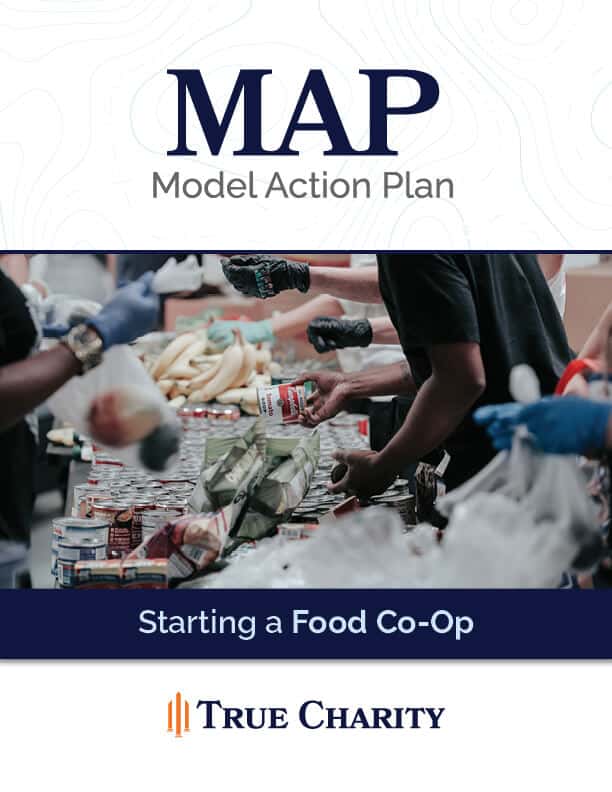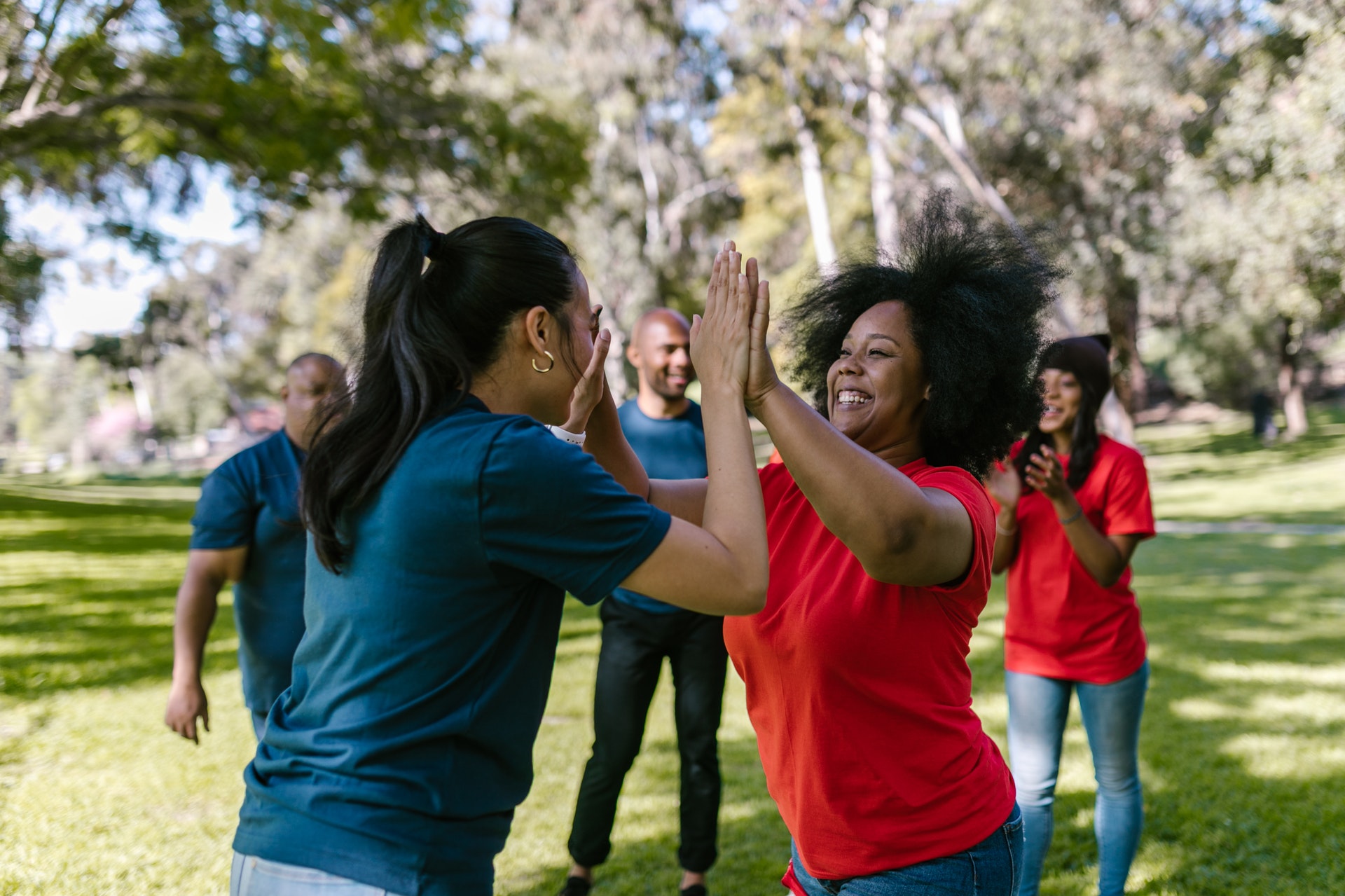How to Turn Your Food Pantry Into a Community Co-op
 Avery West
Avery West
Membership Engagement Director
Read more from Avery
“Our food pantry has been feeding the same families for years. Is there anything we can do to bring about long term transformation in people’s lives?”
This is one of the most common questions we help nonprofits and churches work through. The leaders who ask this question know that their clients don’t merely lack food, but they also often suffer from a lack of community and self-worth. Traditional food pantries, while they meet immediate needs, often fail to address deeper losses of relationship and work that perpetuate the cycle of poverty.
In his book Toxic Charity, Bob Lupton describes Urban Recipe, an Atlanta-based food co-op where members take part in unloading, sorting, and distributing food before they join together in a business meeting. A real sense of community has formed over time, and members appreciate the chance to contribute in providing not only for their own families, but for others’ as well.
While some co-ops hold collective meetings for all members, others operate more on a “drop-in” basis.
Joshua’s Place, a True Charity Network member in Lebanon, OH, is one such group. When co-op members arrive for their appointments, they contribute $4 and meet with an ally (or mentor) for 15 minutes before leaving with a box of food. Members also take part in a developmental class that equips them with parenting skills, financial planning, or other skills needed to rise out of poverty.
Home Sweet Home Ministries in Bloomington, IN, operates by yet another model. Members earn shopping trip vouchers by volunteering for two hours at the Bread for Life Co-op. Volunteer tasks might include stocking shelves, janitorial work, or checking in other members.
Both approaches have distinct benefits. The collective meeting style lends itself to a strong sense of community and easier scheduling, while a drop-in style can accommodate various volunteer and member schedules and lead to a more guided, developmental path out of poverty. It is important to keep in mind, though, that these approaches are not two distinct paths, but rather two ends on a continuum. Your co-op can incorporate elements from each as you meet the particular needs of your community.
Each food co-op looks different, but they all uphold the importance of exchange and community. The principle of exchange simply means that all individuals involved have the opportunity to give, not merely receive. Exchange might look like giving a few dollars, volunteering at the co-op or another area nonprofit, or attending a developmental class. Whether community is formed through eating a meal together, working side by side, or meeting with a mentor, food co-ops can help facilitate the relationships that are essential to a flourishing life.
If you are considering turning your traditional food pantry into a more developmental food co-op, the True Charity Network has all the resources you need to build a detailed plan that works for your situation. In general, we will advise that you begin with a listening tour.
A listening tour is simply a series of conversations that inform your program design. You can ask questions about what the potential member likes and dislikes about the current pantry model, whether they would prefer a regular meeting time or more flexible appointments, and what a realistic contribution of finances or time would be.
These conversations also give you the chance to explain the switch you’d like to make, and build buy-in from the very beginning. Make sure to ask what skills and gifts the individual has that may be helpful to the community (e.g. planting a community garden, teaching a cooking class, cleaning the facility). These questions will not only remind the individual of his assets, but they’ll lead to a more creative, vibrant, and committed community co-op in the long term.
Invite those potential members who seemed especially interested in the co-op to join your advisory board. This board, made up of co-op members, will aid in decision-making, advertisement, and larger tasks like food pick up. Including members in the management of the co-op breaks down the giver/receiver dynamic of traditional food distribution, and helps foster leadership skills.
From there, your staff and advisory board can meet to discuss the specifics of membership requirements, hours, and food distribution. We also recommend that you research the exchange rates of established co-ops as a starting point—this is something the True Charity Network can help you with as well.
Making a developmental change is never easy or smooth. Every co-op learns to adjust to the needs and assets of its community, and that will take time. However, with each developmental change, more families will experience the dignity of exchange and the blessings of relationship. Over time, you may join other food co-ops in finding that you have fewer repeat customers!
 The True Charity team is here to come alongside you as you develop your programs. Whether you are ready to make a change, or just interested in learning more, you can begin by reaching out to info@truecharity.us. True Charity Network members have access to more food co-op resources, including a detailed model action plan, operational documents, and personalized training.
The True Charity team is here to come alongside you as you develop your programs. Whether you are ready to make a change, or just interested in learning more, you can begin by reaching out to info@truecharity.us. True Charity Network members have access to more food co-op resources, including a detailed model action plan, operational documents, and personalized training.

This article is just the tip of the iceberg for the practical resources available through the True Charity Network. Check out all of the ways the network can help you learn, connect, and influence here.
Already a member? Access your resources in the member portal.




